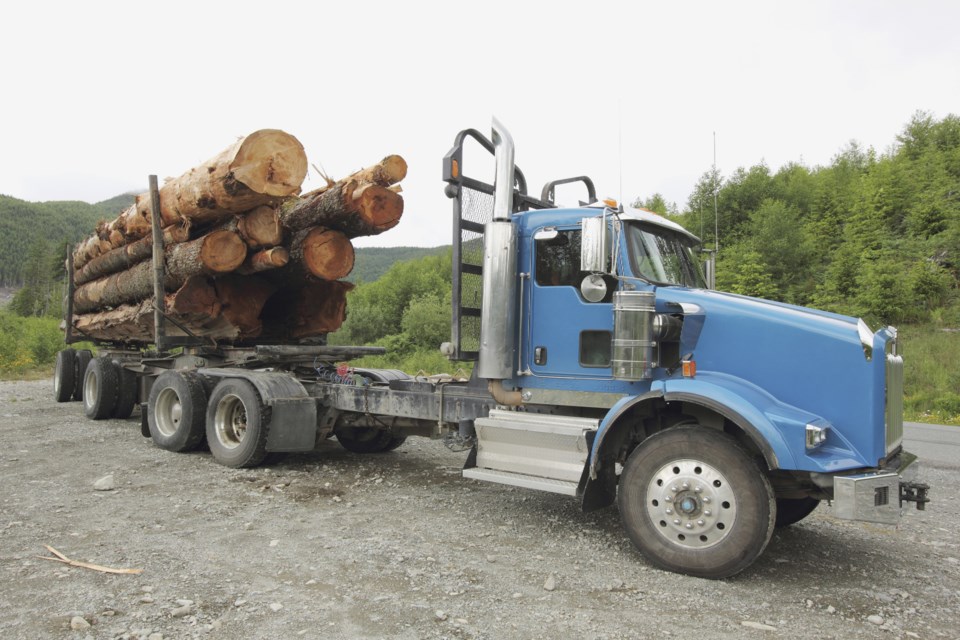LAKELAND - Commercial truckers carry a heavy load when it comes to Alberta’s economic wellbeing, accounting for approximately $3.52 billion of the province’s GDP in 2022.
“The commercial trucking industry is crucial to the province’s economy. From the shoes on our feet to the groceries on our shelves, everything we need to live our daily lives comes on the back of a truck,” Jason Bakalech, president of the Alberta Motor Transport Association (AMTA), told Lakeland This Week when asked about the industry’s role in Alberta.
With more than 18,000 fleets operating in Alberta – some with one truck, others with more than 200 trucks on the road – the industry is an economic driver and an essential cog in the wheel to keeping Alberta business rolling, he said.
But as is the case with many professions, the industry is short-staffed. While records show there are 147,134 licensed Class 1 drivers in the province, Bakalech said Trucking HR Canada is reporting a decrease in Alberta’s commercial driver labour force from 53,300 in the fourth quarter of 2022 to 47,200 in the first quarter of 2023.
“As well, there was a gap of more than 1,000 new drivers needing to be hired and trained,” he said.
So, while the work may be there, getting drivers qualified and behind the wheel of commercial transport vehicles is a challenge and there are other challenges facing the industry.
“At the end of August, we did a Your AMTA campaign in which I attended two in-person and one virtual meeting to not only introduce myself to membership, but to take some time to see the issues most affecting our industry,” he said. “We also surveyed membership and some of the top barriers to success we heard was carriers finding competent drivers, fuel and repair costs, equipment and OEM availability, driver retention, and competitor pricing.
Bakalech said AMTA, which has a mandate to support and advance the province’s commercial transportation industry through safety initiatives, advocacy and research and technology, is working to fill the qualified driver shortage with some key initiatives.
Beyond Licensing – Pathways to Truck and Bus Driving Careers in Alberta offers interested people the opportunity to learn more about career options available to those with a Class 1 licence.
Additionally, the Commercial Truck Driver Competency Training Project (CTP) is working to identify on-the-job training to further develop Class 1 driver competencies. This project is focused on creating a framework to support employers, participants, coaches and mentors “to recruit, deliver, track and report on training progress and engage perceptions of the commercial driving industry as a career and identify barriers to employment as a driver,” he explained.
Bakalech said the association is also working with the government to not only increase the number of rest areas available to drivers in Alberta, but also to ensure they are safe and have the right amenities.
“To diversify and grow this industry, we need to make sure drivers have the right resources.”
Asked about what the future holds for the industry particularly in regards to Canada’s net zero targets, Bakalech said clean fuels and the transition to net zero mobility will be “transformative” for the commercial transportation industry in the years ahead.
“Currently fuel cell electric or battery electric technologies are the only vehicle technologies that support zero emission mandates. AMTA has spent the past two years introducing carrier members to hydrogen fuel cell electric vehicles (FCEV) and battery electric vehicles (BEVs). By the end of 2023, AMTA will have nine zero-emission vehicles operating on Alberta roads.”
AMTA is committed to improving its members’ ability to “successfully operate now, and into an ever-changing future,” he said. “Our goal is to create an equitable, diverse, and prosperous industry, ensuring that goods reach the end user, Alberta continues to proper and is a leader in safety, innovation and efficiency.”




